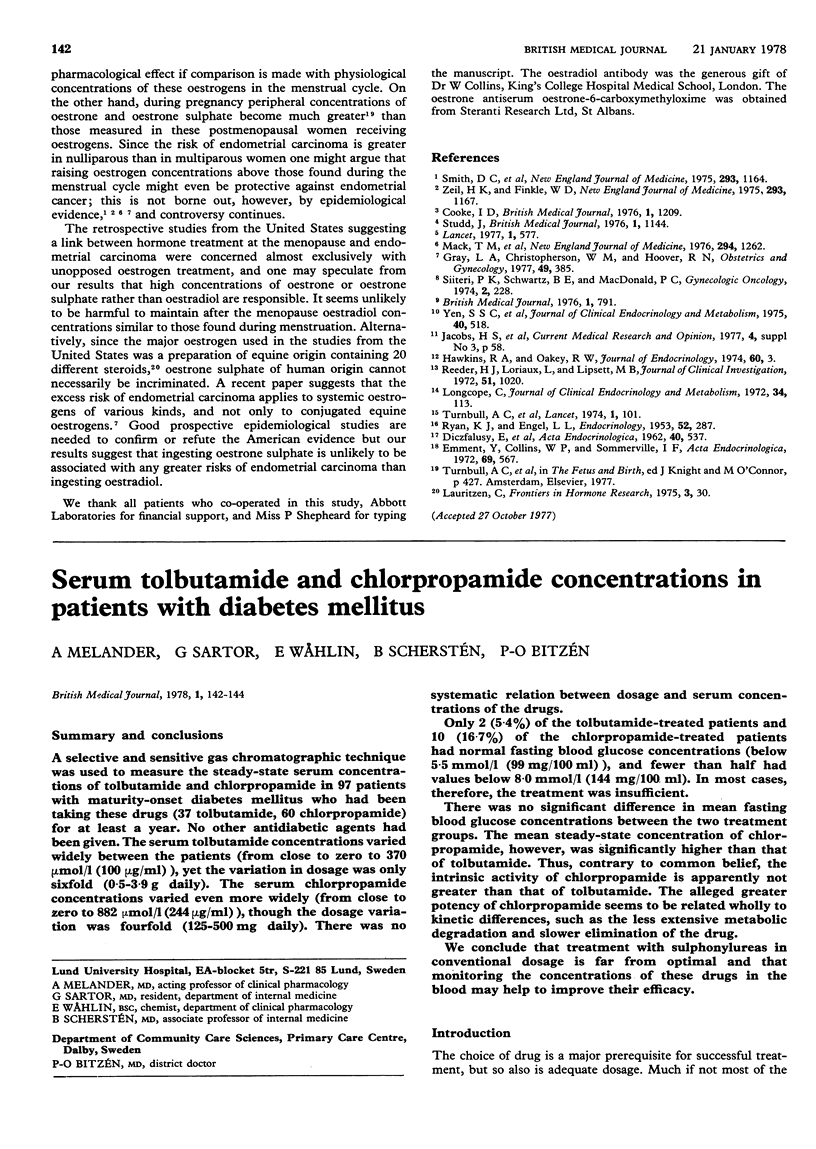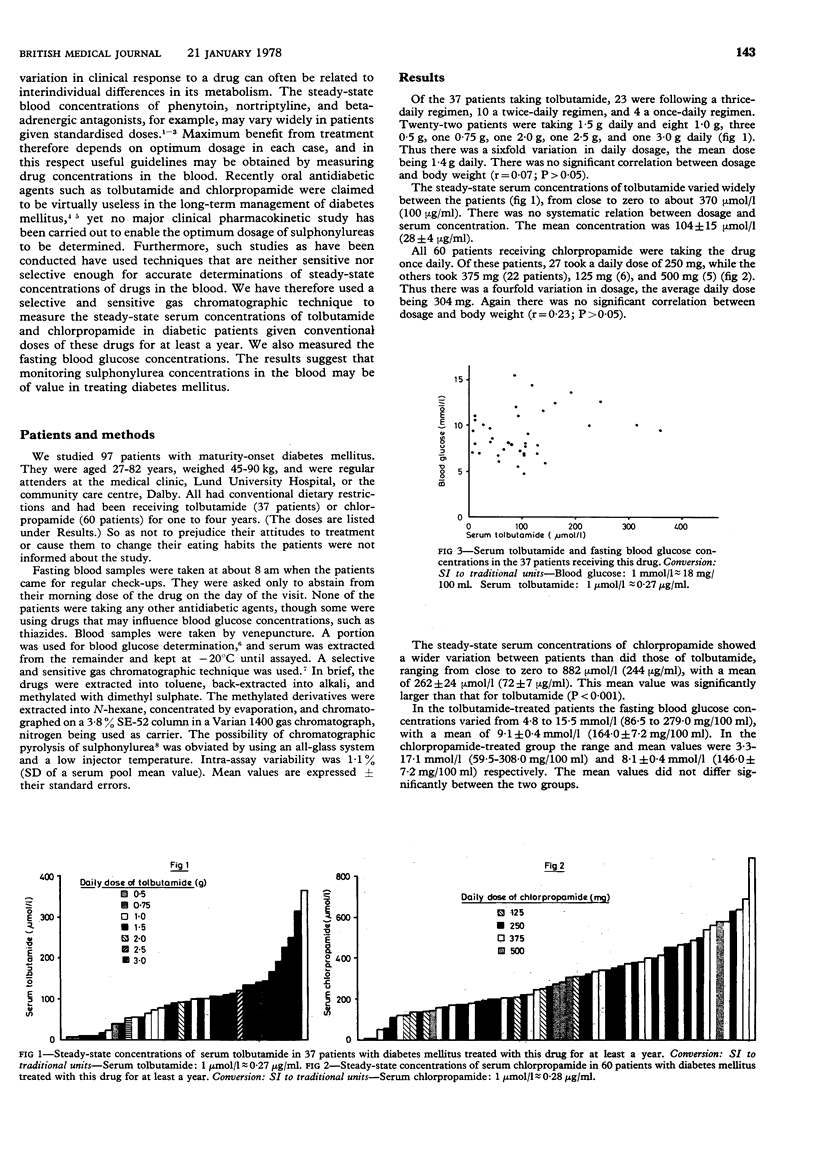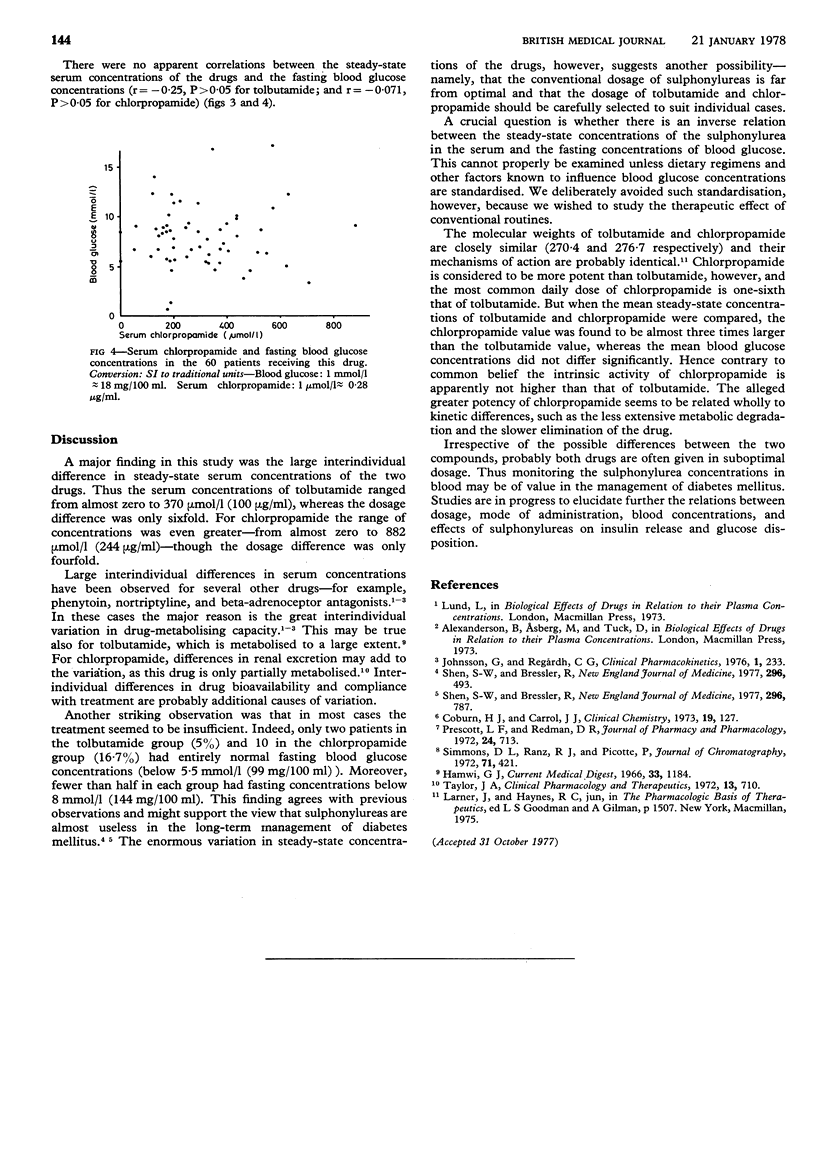Abstract
A selective and sensitive gas chromatographic technique was used to measure the steady-state serum concentrations of tolbutamide and chlorpropamide in 97 patients with maturity-onset diabetes mellitus who had been taking these drugs (37 tolbutamide, 60 chlorpropamide) for at least a year. No other antidiabetic agents had been given. The serum tolbutamide concentrations varied widely between the patients (from close to zero to 370 μmol/l (100 μg/ml)), yet the variation in dosage was only sixfold (0·5-3·9 g daily). The serum chlorpropamide concentrations varied even more widely (from close to zero to 882 μmol/l (244 μg/ml)), though the dosage variation was fourfold (125-500 mg daily). There was no systematic relation between dosage and serum concentrations of the drugs.
Only 2 (5·4%) of the tolbutamide-treated patients and 10 (16·7%) of the chlorpropamide-treated patients had normal fasting blood glucose concentrations (below 5·5 mmol/l (99 mg/100 ml)), and fewer than half had values below 8·0 mmol/l (144 mg/100 ml). In most cases, therefore, the treatment was insufficient.
There was no significant difference in mean fasting blood glucose concentrations between the two treatment groups. The mean steady-state concentration of chlorpropamide, however, was significantly higher than that of tolbutamide. Thus, contrary to common belief, the intrinsic activity of chlorpropamide is apparently not greater than that of tolbutamide. The alleged greater potency of chlorpropamide seems to be related wholly to kinetic differences, such as the less extensive metabolic degradation and slower elimination of the drug.
We conclude that treatment with sulphonylureas in conventional dosage is far from optimal and that monitoring the concentrations of these drugs in the blood may help to improve their efficacy.
Full text
PDF


Selected References
These references are in PubMed. This may not be the complete list of references from this article.
- Coburn H. J., Carroll J. J. Improved manual and automated colorimetric determination of serum glucose, with use of hexokinase and glucose-6-phosphate dehydrogenase. Clin Chem. 1973 Jan;19(1):127–130. [PubMed] [Google Scholar]
- Johnsson G., Regàrdh C. G. Clinical pharmacokinetics of beta-adrenoreceptor blocking drugs. Clin Pharmacokinet. 1976;1(4):233–263. doi: 10.2165/00003088-197601040-00001. [DOI] [PubMed] [Google Scholar]
- Prescott L. F., Redman D. R. Gas-liquid chromatographic estimation of tolbutamide and chlorpropamide in plasma. J Pharm Pharmacol. 1972 Sep;24(9):713–716. doi: 10.1111/j.2042-7158.1972.tb09095.x. [DOI] [PubMed] [Google Scholar]
- Shen S. W., Bressler R. Clinical pharmacology of oral antidiabetic agents (first of two parts). N Engl J Med. 1977 Mar 3;296(9):493–497. doi: 10.1056/NEJM197703032960906. [DOI] [PubMed] [Google Scholar]
- Simmons D. L., Ranz R. J., Picotte P. Determination of serum tolbutamide by gas chromatography. J Chromatogr. 1972 Sep 20;71(3):421–426. doi: 10.1016/s0021-9673(01)91894-1. [DOI] [PubMed] [Google Scholar]
- Taylor J. A. Pharmacokinetics and biotransformation of chlorpropamide in man. Clin Pharmacol Ther. 1972 Sep-Oct;13(5):710–718. doi: 10.1002/cpt1972135part1710. [DOI] [PubMed] [Google Scholar]


